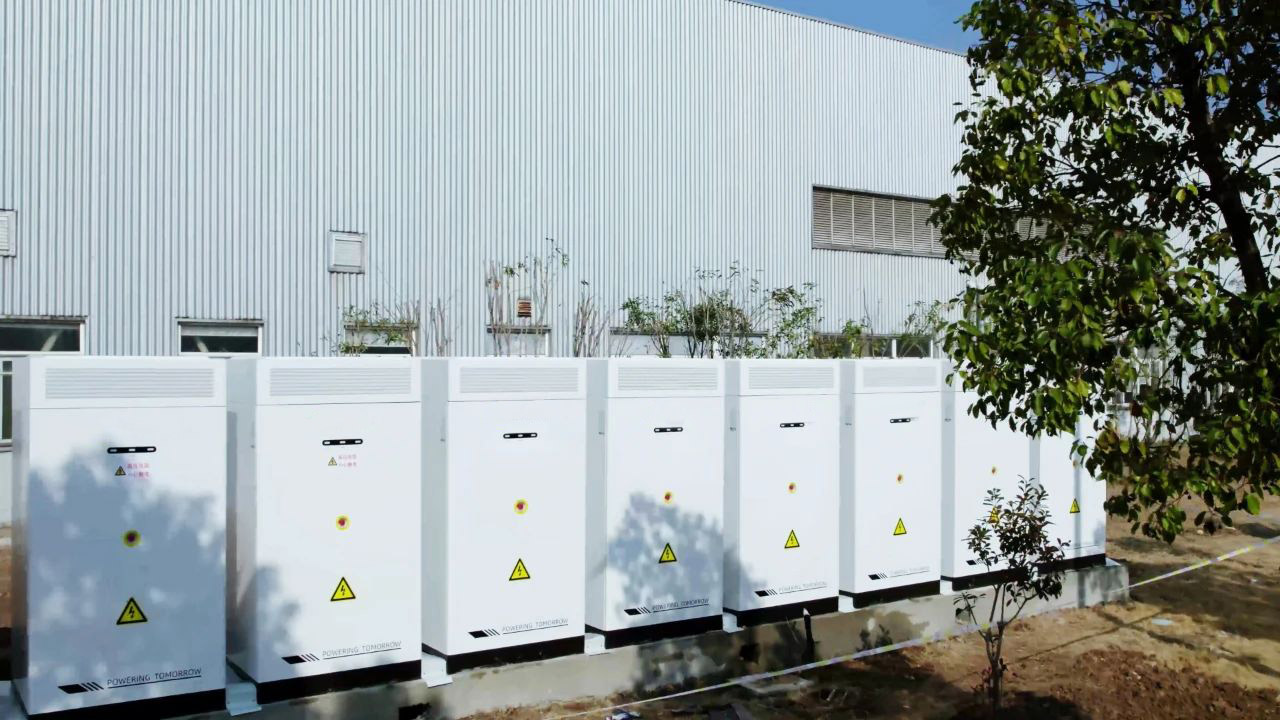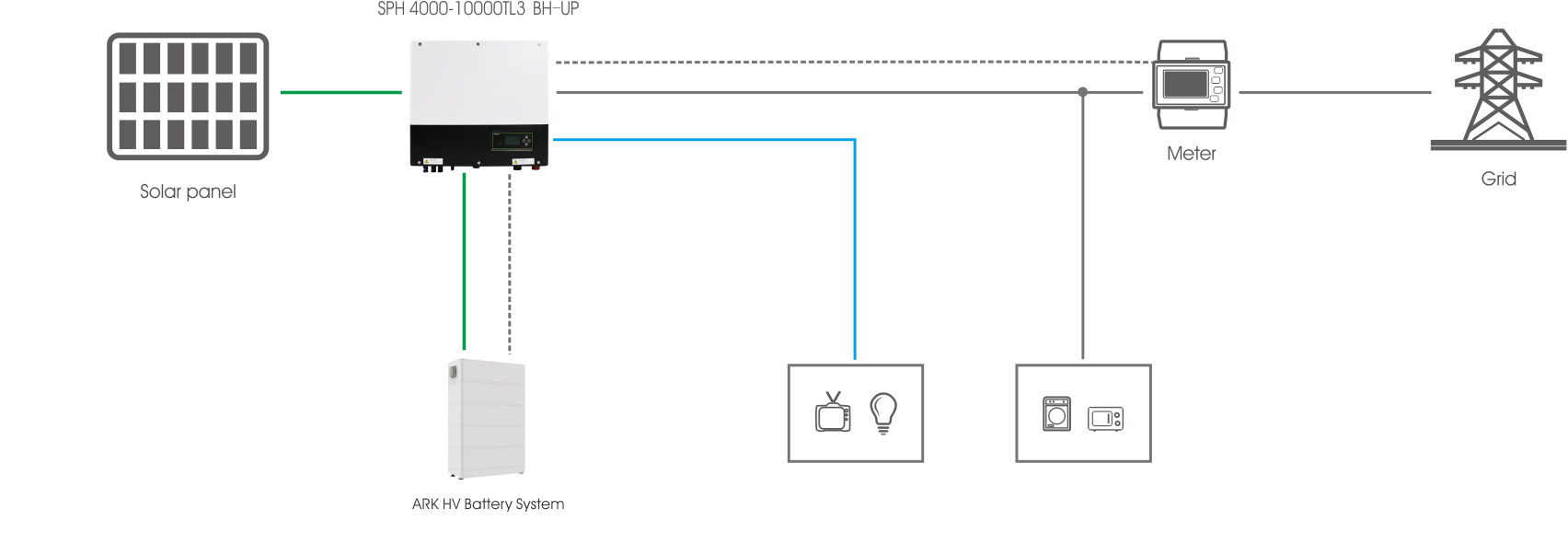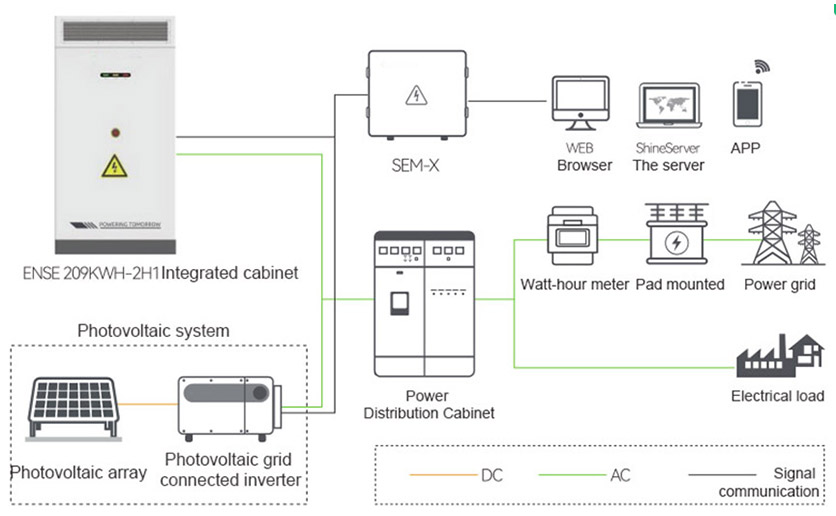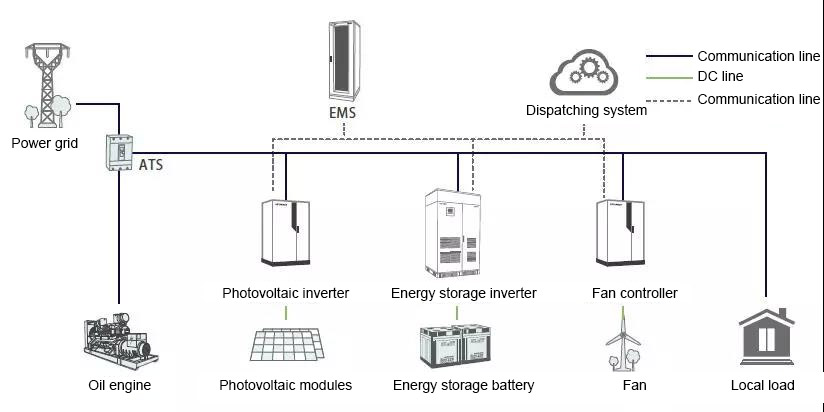Introduction to Four Application Scenarios of Photovoltaic+Energy Storage System
Photovoltaic plus energy storage, in simple terms, is the combination of solar power generation and battery storage. With the increasing capacity of photovoltaic grid connection, the impact on the power grid is growing, and energy storage has ushered in greater growth opportunities.
There are many benefits to combining photovoltaics with energy storage. Firstly, it ensures a more stable and reliable power supply. An energy storage device is like a large battery, storing excess solar energy. When there is insufficient sunlight or a high demand for electricity, it can provide power and ensure continuous supply.
Secondly, adding photovoltaic energy storage can also make solar power generation more economical. By optimizing its operation, it can enable more electricity to be self generated and reduce the cost of purchasing electricity. Moreover, energy storage devices can also participate in the electricity auxiliary service market and bring additional benefits. The application of energy storage technology makes solar power generation more flexible and meets various electricity needs. At the same time, it can also work together with virtual power plants to achieve complementary and supply-demand coordination of multiple energy sources.

Photovoltaic energy storage, unlike pure grid connected power generation, requires the addition of energy storage batteries and battery charging and discharging devices. Although the initial cost may increase, the application scope is much wider. Below, we will introduce four types of photovoltaic+energy storage application scenarios based on different applications: photovoltaic off grid energy storage application scenario, photovoltaic parallel off grid energy storage application scenario, photovoltaic grid connected energy storage application scenario, and microgrid energy storage system application scenario.
Application scenarios of photovoltaic off grid energy storage
Photovoltaic off grid energy storage and generation systems can operate independently without relying on the power grid, and are commonly used in remote mountainous areas, areas without electricity, islands, communication base stations, and street lamps. The system consists of photovoltaic arrays, photovoltaic reverse control integrated machines, battery packs, and electrical loads. The photovoltaic array converts solar energy into electrical energy under illumination, and supplies power to the load and charges the battery pack through a reverse control integrated machine; When there is no light, the battery supplies power to the AC load through an inverter.

Figure 1 Schematic diagram of off grid power generation system
The photovoltaic off grid power generation system is specifically designed for use in areas without power grids or areas with frequent power outages, such as islands, ships, etc. Off grid systems do not rely on large power grids, but rely on the working mode of "storing while using" or "storing before using", doing the task of "delivering charcoal in snowy weather". For households in areas without power grids or areas with frequent power outages, off grid systems have strong practicality.
Photovoltaic off grid energy storage application scenarios
Photovoltaic off grid energy storage systems are widely used in applications where there are frequent power outages, or where photovoltaic self use cannot be fully connected to the grid, high self use electricity prices, and peak electricity prices are much higher than valley electricity prices.

Figure 2 Schematic diagram of off grid power generation system
The system consists of a photovoltaic array composed of solar cell modules, a solar off grid integrated machine, a battery pack, loads, etc. The photovoltaic array converts solar energy into electrical energy under illumination, and supplies power to the load and charges the battery pack through a solar controlled inverter integrated machine; When there is no light, the battery supplies power to the solar controlled inverter integrated machine, and then supplies power to the AC load.
Compared to grid connected power generation systems, off grid systems have added charge and discharge controllers and batteries, resulting in a system cost increase of approximately 30% -50%, but with a wider range of applications. One is that it can be set to output at rated power during peak electricity prices to reduce electricity costs; Secondly, it is possible to charge during valley periods and discharge during peak periods of electricity prices, and make money by utilizing the price difference between peak and valley periods; Thirdly, when the power grid is cut off, the photovoltaic system continues to operate as a backup power source, and the inverter can switch to off grid working mode. The photovoltaic and battery can supply power to the load through the inverter. This scenario is currently widely used in developed countries overseas.
Application scenarios of photovoltaic grid connected energy storage
Grid connected energy storage photovoltaic power generation systems generally operate through AC coupling of photovoltaics and energy storage. The system can store excess power generation, increase the proportion of self use, and apply photovoltaics to ground photovoltaic distribution and storage, industrial and commercial photovoltaic energy storage, and other scenarios. The system consists of a photovoltaic array composed of solar cell modules, grid connected inverters, battery packs, charge and discharge controllers PCS, and electrical loads. When the solar power is less than the load power, the system is powered by both solar energy and the grid. When the solar power is greater than the load power, a portion of the solar energy supplies power to the load and another portion is stored by the controller. At the same time, energy storage systems can also be used for peak valley arbitrage, demand management, and other scenarios to increase the system's profit model.

Figure 3 Schematic diagram of grid connected energy storage system
As an emerging clean energy application scenario, photovoltaic grid connected energy storage system has attracted much attention in China's new energy market. This system combines photovoltaic power generation, energy storage devices, and AC power grids to achieve efficient utilization of clean energy. There are several major advantages, including:
1. Improve the utilization rate of photovoltaic power generation. Photovoltaic power generation is greatly affected by weather and geographical conditions, and is prone to power generation fluctuations. Through energy storage devices, the output power of photovoltaic power generation can be smoothed, reducing the impact of power generation fluctuations on the power grid. At the same time, energy storage devices can provide energy to the grid under low light conditions, improving the utilization rate of photovoltaic power generation.
2. Enhancing the stability of the power grid. Photovoltaic grid connected energy storage systems can achieve real-time monitoring and regulation of the power grid, improving its operational stability. When there is a fluctuation in the power grid, energy storage devices can quickly respond, provide or absorb excess electricity, and ensure the smooth operation of the power grid.
3. Promote the consumption of new energy. With the rapid development of new energy such as photovoltaics and wind power, the issue of consumption has become increasingly prominent. The photovoltaic grid connected energy storage system can improve the access capacity and consumption level of new energy, and alleviate the pressure of power grid peak shaving. Through the scheduling of energy storage devices, smooth output of new energy electricity can be achieved.
Application scenarios of microgrid energy storage system
Microgrid energy storage systems, as an important energy reserve device, are playing an increasingly important role in the development of new energy and power systems in China. With the advancement of technology and the popularization of renewable energy, the application scenarios of microgrid energy storage systems are constantly expanding, mainly including the following two aspects:
1. Distributed generation and energy storage system: Distributed generation refers to the establishment of small power generation equipment near the user side, such as solar photovoltaics, wind energy, etc., to store excess power generation through energy storage systems, in order to provide electricity during peak electricity consumption periods or grid failures.
2. Microgrid backup power supply: In remote areas, islands and other places where grid access is difficult, microgrid energy storage systems can serve as backup power sources to provide stable power supply for the local area.
There are too many complementary ways for microgrids to fully and effectively tap into the potential of distributed clean energy, reduce unfavorable factors such as small capacity, unstable power generation, and low reliability of independent power supply, and ensure the safe operation of the power grid. It is a beneficial supplement to the large power grid. The application scenarios of microgrids are more flexible, with scales ranging from several kilowatts to tens of megawatts, and a wider range of applications.

Figure 4 Schematic diagram of photovoltaic microgrid energy storage system
The application scenarios of photovoltaic energy storage are rich and diverse, covering various forms such as off grid, grid connected, and microgrid. In practical applications, various scenarios have their own advantages and characteristics, providing users with stable and efficient clean energy. With the continuous development and cost reduction of photovoltaic technology, photovoltaic energy storage will play an increasingly important role in the future energy system. At the same time, the promotion and application of various scenarios will also help the rapid development of China's new energy industry, contributing to the realization of energy transformation and green low-carbon development.